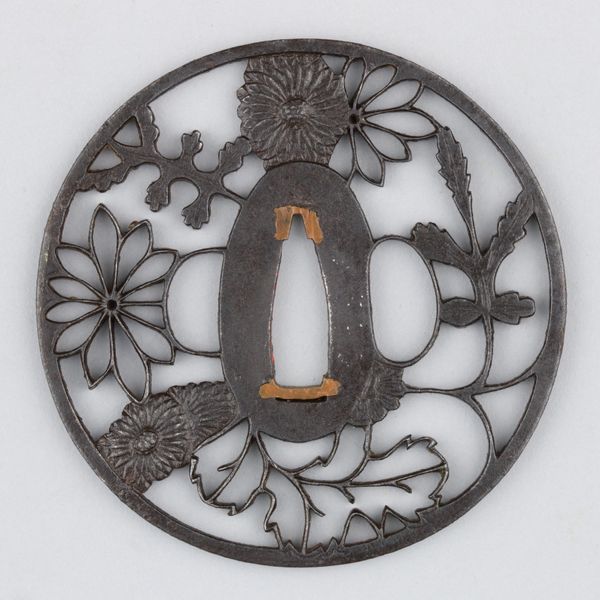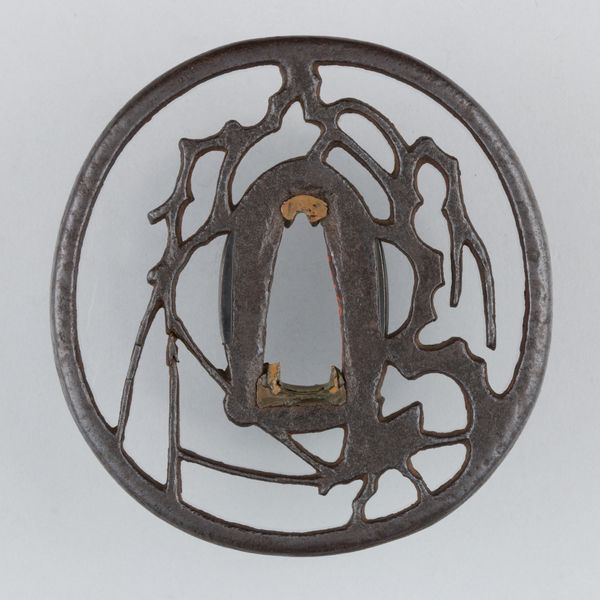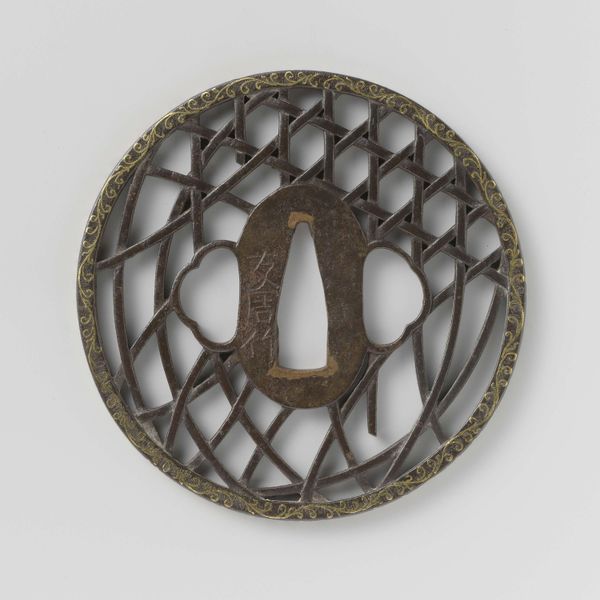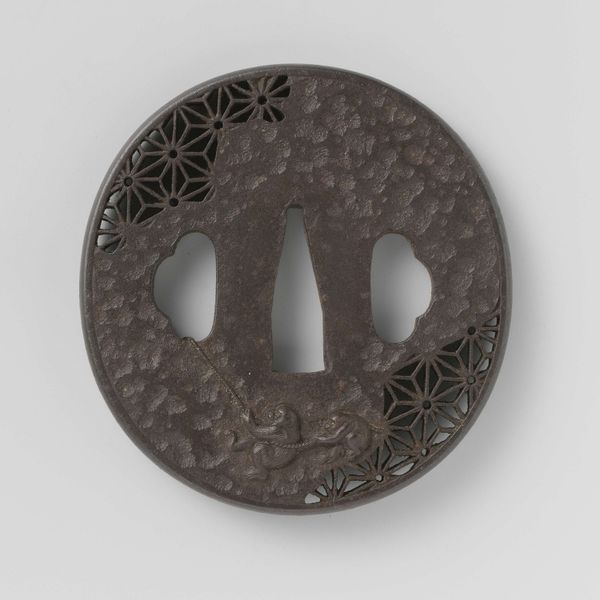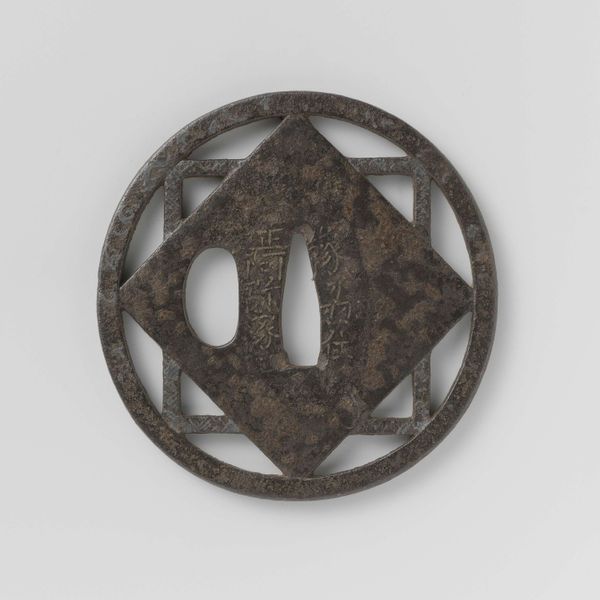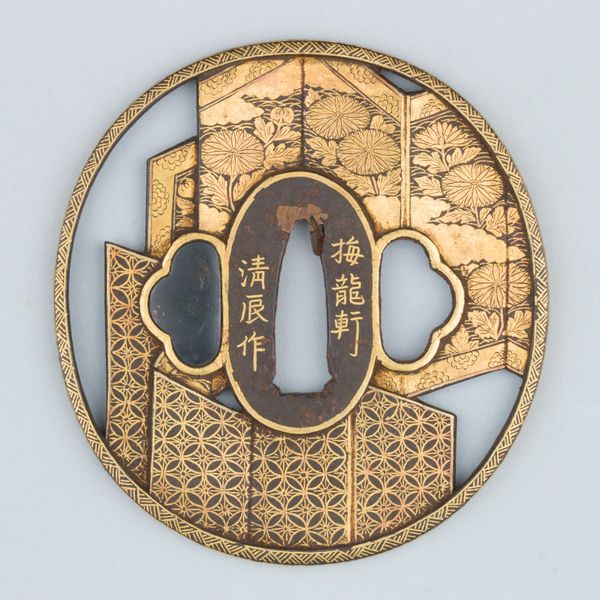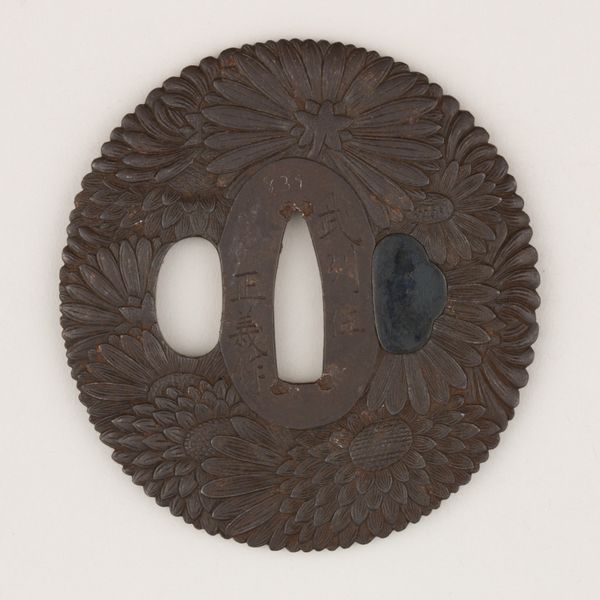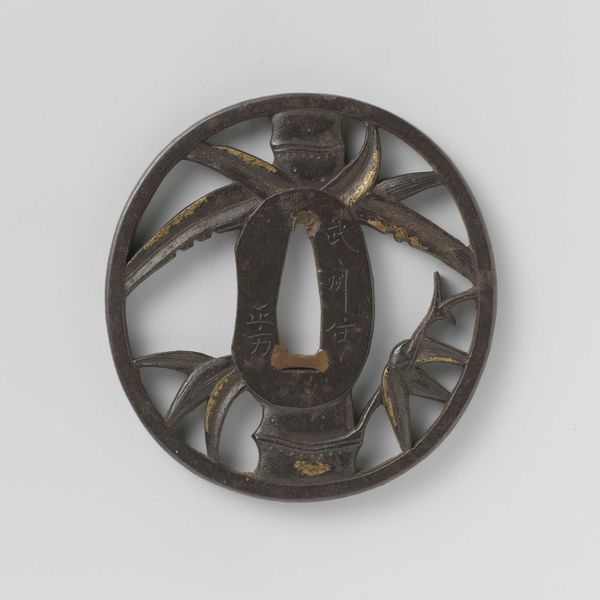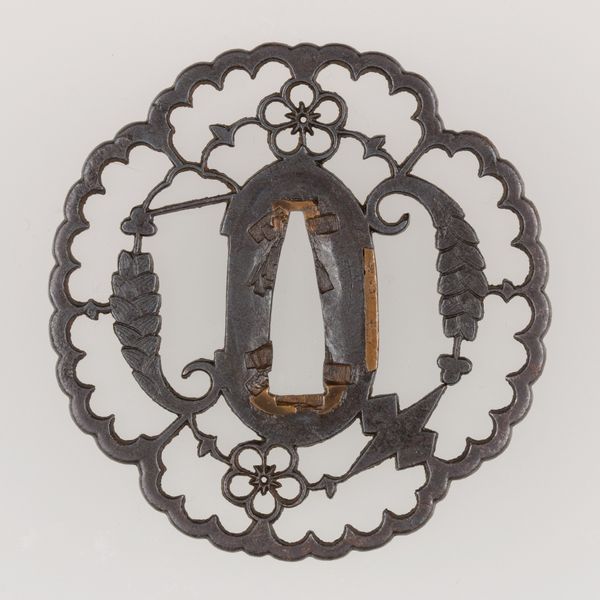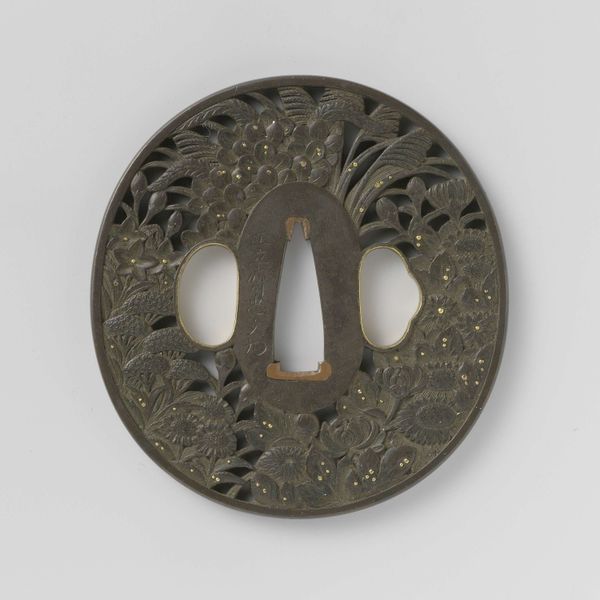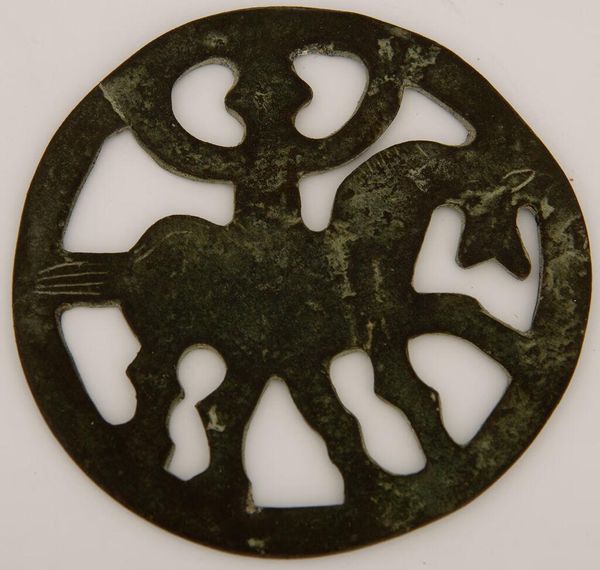
steel, metal, sculpture, engraving
#
steel
#
medieval
#
metal
#
asian-art
#
geometric
#
sculpture
#
engraving
#
sword
Dimensions: Diam. 3 5/8 in. (9.2 cm); thickness 1/8 in. (0.3 cm); Wt. 3.6 oz. (102.1 g)
Copyright: Public Domain
Curator: Here we have a fifteenth-century Japanese sword guard, or tsuba, made from steel and residing here at the Metropolitan Museum of Art. It's attributed to the Katchūshi school. Editor: Immediately, I’m struck by how this functional object, meant for war, is also undeniably beautiful. The intricate design and perfect symmetry feel almost meditative, right? Curator: Absolutely. It speaks to a deep integration of martial and aesthetic values within feudal Japanese culture. These guards weren’t mere accessories; they were statements reflecting the samurai’s identity, status, and philosophical leanings. Consider how gender roles factor into access to wielding a sword like this, then think about the potential meaning-making behind this symbolic, and useful, piece of decorated steel. Editor: It makes you wonder, what was the owner like? You can imagine them polishing this piece, not just for function, but as a ritual act of self-reflection. There’s a tension between the geometric precision and this almost dreamlike quality. Curator: The geometric shapes point toward philosophical concepts deeply rooted in Zen Buddhism and Shintoism. Notice the way the shapes interplay: voids surrounding a sharp geometric form, maybe hinting at duality? It really invites broader exploration of how abstraction in design connects to cultural values. Editor: True, I am stuck thinking of duality, and harmony: violence contained within beauty. I keep seeing these cloud-like shapes forming a ring, maybe protection but maybe freedom as well. If we're digging a little deeper, do you think it is intentional for the owner to convey one of those to an opponent, like, "look how well-composed I am, with such an artistic tool"? Curator: That is an interesting angle. We also can't separate ourselves from the reality of militarization and its presence through objecthood. Think about this level of craftsmanship applied within violent cultural histories. I always believe the more critical thought given to art history, the better. Editor: I suppose that is what art does... I can look at a little metal ring from so long ago and somehow have some thoughts of meaning and history as well. Now, looking at it knowing its origins is more sobering and perhaps even empowering. Curator: Exactly. A closer consideration of form, combined with critical theory can challenge and enrich our understanding, always. Editor: Well, that certainly gives me something to ponder long after I walk away.
Comments
No comments
Be the first to comment and join the conversation on the ultimate creative platform.
